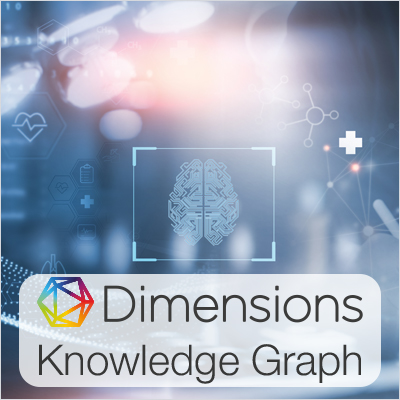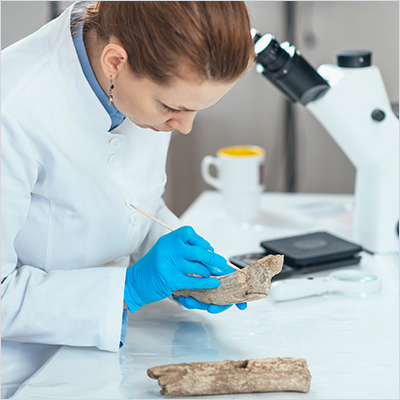Smarter Digital Twins with metaphactory: AI, Knowledge Graphs and Asset Administration Shell for Industry 4.0
Discover how the Asset Administration Shell (AAS) and metaphactory transform industrial data exchange. This post explores how knowledge graphs and AI enhance AAS for interoperable digital twins and compliance with regulations like the Digital Product Passport (DPP).
Identifying causal relationships with knowledge graphs and large language models
In this article, we’ll discuss how LLMs and Symbolic AI drive precise, comprehensive and contextualized Causal Relationship Search and how it works in the Dimensions Knowledge Graph.
Enterprise Information Architecture success stories from leading global organizations
From disconnected data silos to a unified, knowledge-centric organization—discover how two multinational organizations reshaped their data culture with a semantic model-driven Enterprise Information Architecture.
Efficient and high-performance operation of semantic models in Enterprise Information Architecture
In this guest post, Michael Schäfer, IT architect and Division Lead Multicloud & Modern Work at Netlution dives into how semantic knowledge models enable efficient data collection, organization, and utilization to drive business success, as well as important considerations when assessing the IT operating model for an EIA solution.
Leveraging Knowledge Graphs at Scania and TRATON: A Revolution in Data Management
In this guest blog post, Tanuja Gupta, Manager: Knowledge Graphs and Explainable AI at MAN and previously Solutions Architect and Knowledge Graph Ambassador at Scania (both part of TRATON GROUP), explains how knowledge graphs have helped Scania—a world-leading provider of transport solutions— and TRATON GROUP—one of the world’s largest commercial vehicle manufacturers—overcome data challenges and create a more connected, consumable, and actionable data environment across the enterprise and its sister brands.
BIBFRAME dilemmas for libraries: Challenges and opportunities
In this article, Richard Wallis, a distinguished Linked Data and Semantic Web expert and thought leader, shares insights from the recent BIBFRAME Workshop in Europe where he presented a novel knowledge graph-powered solution created for a major national library. He also explores the common challenges that libraries currently face and the opportunities that technologies like linked data and knowledge graphs can offer for managing and connecting massive data volumes, as well as improving the experience for library users.
Revolutionizing HR Recruiting with Knowledge Graphs and LLMs: Introducing Zenia Graph's HR Recruiting Accelerator
Traditional HR recruiting often feels like searching for a needle in a haystack. Companies are inundated with resumes, and candidates are overwhelmed by the sheer number of job listings. Time-consuming manual processes, coupled with the challenge of finding the perfect candidate-job match, hinder efficiency and lead to suboptimal hiring decisions and missed opportunities. To revolutionize this critical function, Zenia Graph co-founders, Aurelije Zovko and Nina Zovko introduce their HR Recruiting Accelerator, a cutting-edge solution powered by the synergy of knowledge graphs and large language models.
How a semantic model can elevate your enterprise information architecture
If your organization doesn’t already have an enterprise information architecture in place—it should, and if you do have one, it should be based on a semantic model. In this article, we’ll explain what an “enterprise information architecture” is and how it can support your enterprise with decision intelligence, knowledge democratization and enterprise-wide optimization.
Breathing new life into old drugs: The promise of drug repositioning
In the ever-evolving world of pharmaceuticals, an intriguing strategy has gained traction: drug repositioning. Also known as drug repurposing, reprofiling, redirecting, or switching— this approach involves finding new uses for existing medications. While it comes with its own set of challenges, drug repositioning offers several advantages, including a potential solution to the current slowdown in new drug discovery.
How BKW Energie resolved smart meter choke points with a knowledge graph
This blog post is a recap of a presentation held at the 2023 Knowledge Graph Symposium about BKW Energie's smart meter operations, the data challenges they experienced and how knowledge graphs supported this complex use case.
Using knowledge graph-based LLM for relation & event detection
This post originally appeared on the Ontotext website and is republished and edited with the permission of our partners at Ontotext. In this blog post, we explore Ontotext’s latest knowledge graph-powered solution that works with LLMs to transform raw news content into actionable data for events impact assessment and risk and opportunity detection.
Introducing the Dimensions Knowledge Graph
In this blog post, we discuss the capabilities of the new Dimensions Knowledge Graph and how it helps organizations overcome persistent data challenges in the pharma space and power use cases across the entire pharma value chain. Keep reading!
We used a knowledge graph to enhance our CMS. Here’s how it went.
Building explainable and trustworthy recommendation systems: What we learned from IKEA at KGC 2023
In this blog post, we dive into how knowledge graphs play an important role in IKEA's recommendation systems, based on our experience attending two presentations by IKEA at the 2023 Knowledge Graph Conference.
The future of libraries and linked data: How the National Library Board of Singapore modernized its data management
In this blog post, we'll discuss the powerful knowledge graph-based solution that transformed NLB's library and resource management, and how you, too, can leverage these tools to support your organization's data-driven use case!
Semantic Knowledge Graphs from Human Remains - Modeling osteological research data from biological anthropology
This blog post is co-authored by Felix Engel and Stefan Schlager. Felix and Stefan work for the department of Biological Anthropology at the University of Freiburg where they lead the development of AnthroGraph – an application that researchers can use to model anthropological data as knowledge graphs and intuitively explore, visualize and find information. In this guest post for the metaphacts blog, they explain how metaphactory was used as the development framework for AnthroGraph and how the resulting application can support the standardization of research data and the creation of reliable, curated and reusable collections of osteological research, ultimately allowing researchers to collaborate across disciplines and perform large-scale analyses.
GraphDB & metaphactory Part II: An RDF Database and A Knowledge Graph Platform in Action
In our previous post, we covered the basics of how the Ontotext and metaphacts joint solution based on GraphDB and metaphactory helps customers accelerate their knowledge graph journey and generate value from it in a matter of days.
This post looks at a specific clinical trial scoping example, powered by a knowledge graph that we have built for the EU funded project FROCKG, where both Ontotext and metaphacts are partners. It demonstrates how GraphDB and metaphactory work together and how you can employ the platform's intuitive and out-of-the-box search, visualization and authoring components to empower end users to consume data from your knowledge graph.
You can also listen to our on-demand webinar on the same topic or check out our use case brief.
An Interconnected System for Reference Data
Publishing FAIR data in the humanities sector
Reference data is a crucial element of data curation in the cultural heritage and humanities sector. Using reference data brings multiple benefits, such as consistent cataloguing, easier lookup and interaction with the data, or compatibility with other data collections that use the same reference data. Overall, the use of reference data can support the publication of FAIR data - data that is findable, accessible, interoperable and reusable.
In museum collection management, for example, various thesauri can be used as reference data to ensure the accurate and consistent cataloguing of items in a controlled manner and according to specific terminologies. Thesauri exist for various areas of expertise. One example is the Getty Art and Architecture Thesaurus® (AAT) which describes the different types of items of art, architecture and material culture, such as "cathedral" as a type of religious building. Authority data has also been published to support the unique identification of specific entities such as persons, organizations, or places, for example, "Cologne cathedral" as a specific instance of the type "cathedral". Such authority data sources include The Integrated Authority File (GND) or the Union List of Artist Names® Online (ULAN) and are specifically important for disambiguating over entities with the same name, e.g., Boston, the town in the UK, and Boston, the city in the USA.
Digital humanities projects often combine several research directions and use materials that cover multiple disciplinary areas. This makes the implementation of reference data difficult, as several reference data sources need to be used to cover all aspects and facets of a project. Moreover, technical access to reference data is inconsistent, with systems using different interfaces and APIs, which makes integration challenging.
GraphDB & metaphactory Part I: Generating Value from Your Knowledge Graph in Days
Large enterprises have identified knowledge graphs as a solid foundation for making data FAIR and unlocking the value of their data assets. Data fabrics built on FAIR data drive digital transformation initiatives that put companies ahead of the competition.
But while the benefits of knowledge graphs have become clear, the road to their implementation has often been long and complex, and success has relied on the involvement of seasoned knowledge graph experts.
This blog post goes through the basics of the joint solution delivered by Ontotext and metaphacts to speed up this journey.
A Knowledge Graph for the Agri-Food Sector
Raul Palma leads the data analytics and semantics department at the Poznan Supercomputing and Networking Center (PSNC), where he coordinates the R&D activities and the center’s participation in various EU projects around these topics. In this guest post for the metaphacts blog, Raul explains how knowledge graph technology can address data integration challenges in the agri-food sector, showcasing it through a few use cases. He describes how he leveraged metaphactory to build a domain-specific application - FOODIE - that delivers intuitive access to distributed, heterogeneous data sources and allows end users to extract meaningful insights.
FOODIE is an agriculture knowledge hub delivered as a Web application built on top of metaphactory Knowledge Graph platform. The application enables an integrated view and access over multiple datasets which have been collected from various and heterogeneous sources relevant to the agriculture sector, transformed, and published as Linked Data / in a Knowledge Graph.



















